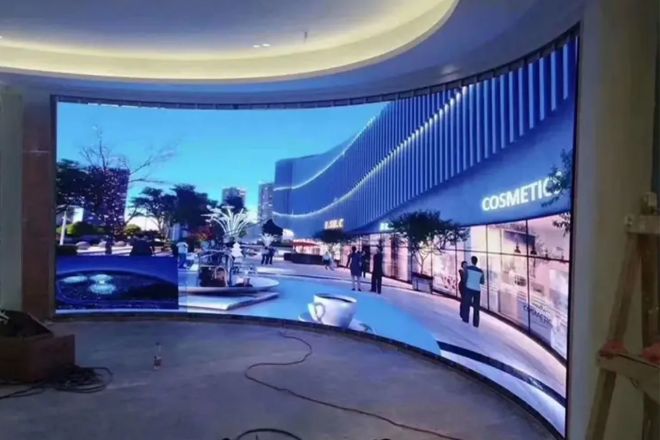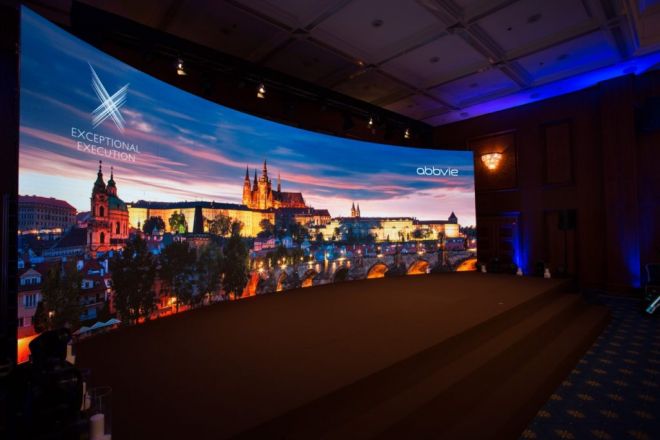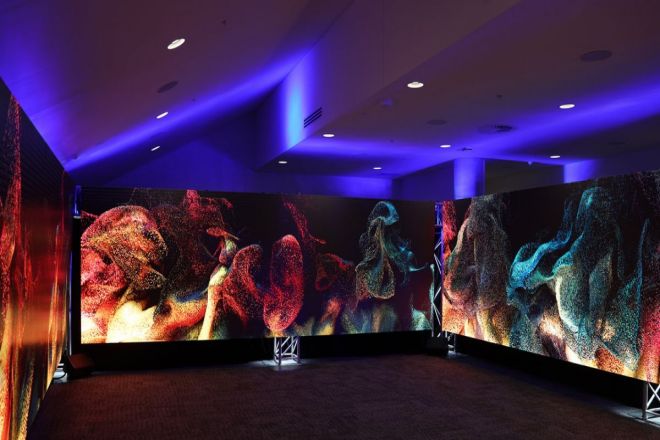介绍

In today’s digital age, LED显示屏 have become an important tool for information transmission and visual display.
For consumers who want to buy LED display screens, it is crucial to understand their life expectancy, as it directly affects the Return on investment, long-term operating costs, and ease of maintenance.
This article aims to provide buyers with a set of scientific and effective methods to help them accurately evaluate the life of LED display screens.
1. Why pay attention to the life of LED display screens
Paying attention to the life of LED display screens is important in many aspects, and the return on investment, operating costs, and user experience you mentioned are the core reasons.
1). Return on investment:
As a major investment, the life expectancy of LED display screens directly affects the Return on investment. A long-life display screen means that users do not need to frequently replace or upgrade it within the same time period, thus saving a lot of reinvestment costs.
This is especially important for businesses, advertisers, or any place that needs to display information for a long time because they can enjoy the benefits of investment for a long time without worrying about the need to invest again in the short term due to equipment aging.
2). Operating costs:
In addition to the initial investment, the operating cost of the LED display screen is also an important factor to consider. Over time, the components of the display may wear out, age, or fail, which will lead to increased maintenance costs.
If the display has a short life, maintenance and replacement of components will be more frequent, increasing the overall operating costs. In contrast, a long-life display can reduce these additional expenses and make operating costs more controllable.
In addition, understanding the life of the display can also help to develop a reasonable maintenance plan. By regularly checking and replacing aging parts, the service life of the display can be extended, and downtime caused by sudden failures can be reduced.
3). User experience:
For viewers using LED displays, continuous and stable display effects are crucial. If the display frequently fails or the display effect deteriorates, it will seriously affect the audience’s viewing experience.
Long-life displays usually have better stability and reliability, ensuring clear and bright display effects in various environments. This not only helps to improve audience satisfaction and loyalty but also helps to shape brand image and enhance market competitiveness.
In addition, stable display effects also help to reduce repair time and costs caused by failures. This is especially important for venues that need to continuously broadcast advertisements or information.
2. Lifespan factors to pay attention to before purchasing

Before purchasing an LED display, it is crucial to pay attention to the factors that affect its lifespan. Here is a detailed explanation of several key points you mentioned:
1). Brand and manufacturer reputation:
Choosing well-known brands and manufacturers with good market reputations is the first step to ensure product quality and after-sales service. Well-known brands usually have more mature production processes, stricter quality control systems, and more complete after-sales service networks.
These brands pay more attention to long-term market reputation, so their products tend to be more reliable and have a longer lifespan.
2). Technical specifications and certifications:
Technical specifications are important indicators for understanding the performance of the product. When checking, special attention should be paid to the quality of the LED chip, packaging technology, and the design of the drive circuit.
High-quality LED chips and advanced packaging technology can improve the brightness and color reproduction of the display while reducing energy consumption and heat generation. An excellent drive circuit design can ensure the stable operation of the display and reduce the failure rate.
In addition, it is also very important to confirm whether the product has passed relevant international certifications.
Certifications such as CE, RoHS, and UL not only represent that the product meets international safety and quality standards but also mean that the manufacturer pays attention to environmental protection and sustainable development during the production process.
These certifications provide strong guarantees for the quality and safety of the products.
3). Cooling system:
LED displays generate a lot of heat during operation. If the heat dissipation is poor, the temperature of the LED chip will rise, thus affecting its luminous efficiency and life. Therefore, it is crucial to understand the heat dissipation design of the display.
A good heat dissipation system should include efficient heat dissipation materials, sufficient heat dissipation area, and reasonable use of fans or heat pipes.
These designs can effectively dissipate heat and keep the LED chip within a suitable operating temperature range, thereby extending its life.
4). Warranty policy and after-sales service:
Warranty policy and after-sales service are important factors in evaluating product life and long-term support. Before purchasing, you should carefully inquire about the warranty period and after-sales service content provided by the manufacturer.
The longer the warranty period, the greater the manufacturer’s confidence in the quality of the product, and perfect after-sales service can provide solutions in time when there is a problem with the product, reducing the user’s losses.
In addition, attention should be paid to the maintenance response time and spare parts supply to ensure timely support when needed.
3. How to evaluate the life of LED displays
Evaluating the LED显示屏的寿命 is a comprehensive process that requires a combination of information from multiple aspects. The following are some specific evaluation methods:
1). Refer to user reviews and cases
- 查看用户评论:
Before purchasing, check other users’ reviews and case sharing through official websites, e-commerce platforms, industry forums, and other channels. These reviews often reflect the performance of the product in actual use, including life, stability, maintenance, and other aspects.
- Pay attention to long-term user feedback:
Pay special attention to the feedback from users who have been using it for a period of time (such as several years), which can better reflect the actual life of the product. Long-term users can provide more in-depth and comprehensive user experience and life information.
2). On-site testing and demonstration
- Request on-site testing:
If conditions permit, you can ask the supplier to provide on-site testing or demonstration opportunities. Observe the performance of the display screen in different brightness, color, and scenes in person to evaluate its display effect and stability.
- Check key indicators:
During the test, pay attention to the key indicators of the display screen, such as 亮度 uniformity, color reproduction, grayscale level, 刷新率, etc. The quality of these indicators directly affects the display effect and life of the display screen.
- 稳定性测试:
The stability of the display screen under long-term operation can be tested by continuously playing videos or images. Observe whether there are flickering, black screens, dead lights and other phenomena.
3). Ask for professional advice
- Consult industry experts:
Consult experts or technical consultants in the industry to understand their opinions on the lifespan of different brands and models of LED display screens. These experts usually have rich industry experience and professional knowledge, and can provide more accurate and authoritative evaluations.
- Reference to professional reports:
Consult relevant industry reports, technical white papers, and other literature to understand the technical development trends of LED display screens, factors affecting lifespan, and performance comparisons of products of different brands and models.
4). Technical specifications and certifications
- Check the technical specifications:
Check the technical specifications of the product in detail to understand key indicators such as LED chip quality, packaging technology, and drive circuit design. These indicators have a direct impact on the lifespan of the display screen.
- Confirm international certifications:
Confirm whether the product has passed relevant international certifications, such as CE, RoHS, UL, etc. These certifications are important guarantees for product quality and safety, and are also one of the important factors in evaluating product lifespan.
5). Warranty policy and after-sales service
- Understand the warranty policy:
Ask the manufacturer about the warranty period and after-sales service content provided. The longer the warranty period, the greater the manufacturer’s confidence in the quality of the product; and perfect after-sales service can provide timely solutions when there are problems with the product.
- Evaluate after-sales service capabilities:
Understand the manufacturer’s after-sales service network, repair response time, spare parts supply, etc. These factors will directly affect the maintenance and care effects of the product during use, and thus affect the life of the product.
4. Maintenance tips after purchasing an LED display screen

After purchasing an LED display screen, correct maintenance techniques are essential to extend its service life, maintain the display effect, and ensure stable operation. Here are some key maintenance tips:
1). Regular cleaning and maintenance
- Cleaning the display screen:
Use a soft, dry cloth or a dedicated cleaning cloth to gently wipe the surface of the display screen to remove dust and dirt. Avoid using detergents containing chemicals to avoid damaging the screen surface.
- Keep heat dissipation unobstructed:
Ensure that the display screen’s heat dissipation system (such as cooling fans, heat sinks, etc.) is not blocked and the heat dissipation channel is unobstructed. Regularly clean dust and debris on the heat dissipation system to ensure good heat dissipation.
2). Follow the manufacturer’s instructions and recommendations
- Proper use:
Strictly operate the display screen in accordance with the instructions and recommendations provided by the manufacturer to avoid damage caused by excessive use or improper operation. For example, long-term use should be avoided at high brightness and high contrast to reduce the loss of LED chips.
- 环境控制:
Keep the temperature, humidity, and other parameters of the display environment within the range recommended by the manufacturer. Avoid using the display under extreme temperature or humidity conditions to prevent damage to internal components.
3). Regularly check the parameters and performance of the display
- 亮度和色彩:
Regularly check whether the brightness and color of the display are uniform and accurate. If there is any deviation, adjust it in time or contact the manufacturer for repair.
- 稳定性和可靠性:
Observe the stability of the display under long-term operation, and check whether there are flickering, black screen, dead light and other phenomena. If there is a problem, it should be handled in time and the relevant information should be recorded for subsequent analysis.
- 电气连接:
Check whether the electrical connection of the display is firm and reliable, including the power cord, signal cord, etc. Avoid signal loss or equipment failure due to poor contact.
4). Other maintenance suggestions
- 备份数据:
Regularly back up important data such as the control software and setting parameters of the display to prevent data loss or damage from affecting use.
- 列车运营商:
Train the operators of the display to understand the basic operation, daily maintenance and simple troubleshooting methods of the display.
- 及时保养:
Once the display screen shows signs of failure or performance degradation, the manufacturer or professional maintenance personnel should be contacted in time for maintenance to avoid the problem from expanding and affecting the service life.
结论
As a buyer, when evaluating the life of the LED display screen, you should consider brand reputation, technical specifications, cooling system, warranty policy, and user reviews.
Through on-site testing, asking for professional opinions, and paying attention to post-maintenance measures, you can more accurately judge the life of the display screen and make wise purchasing decisions.
At the same time, regular maintenance and care after purchase are also important means of extending the life of the display screen.
最后,如果您想了解更多关于LED显示屏的知识, 请与我们联系。
